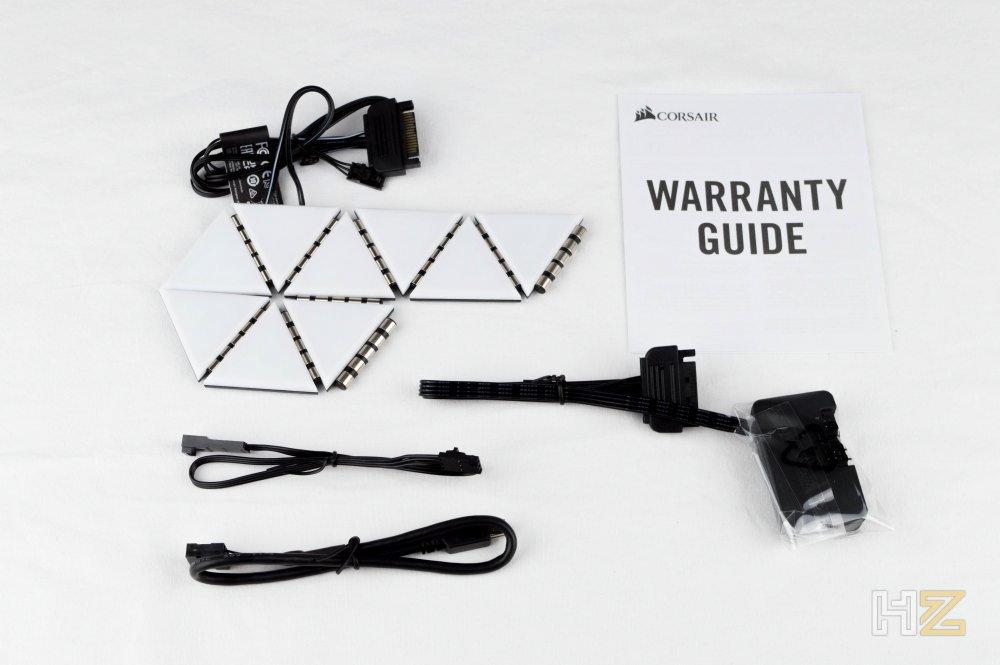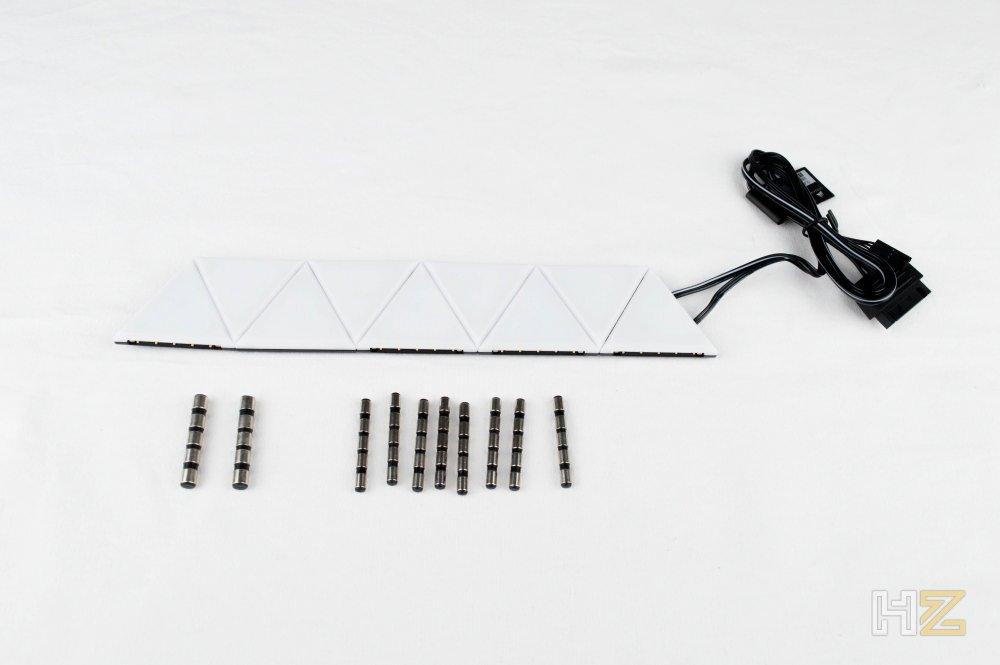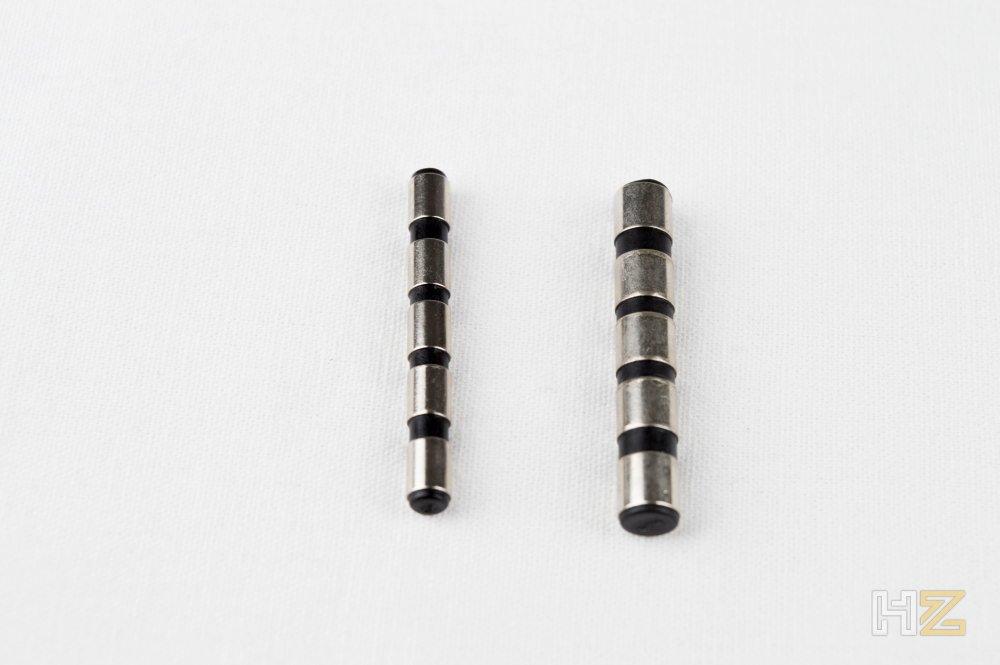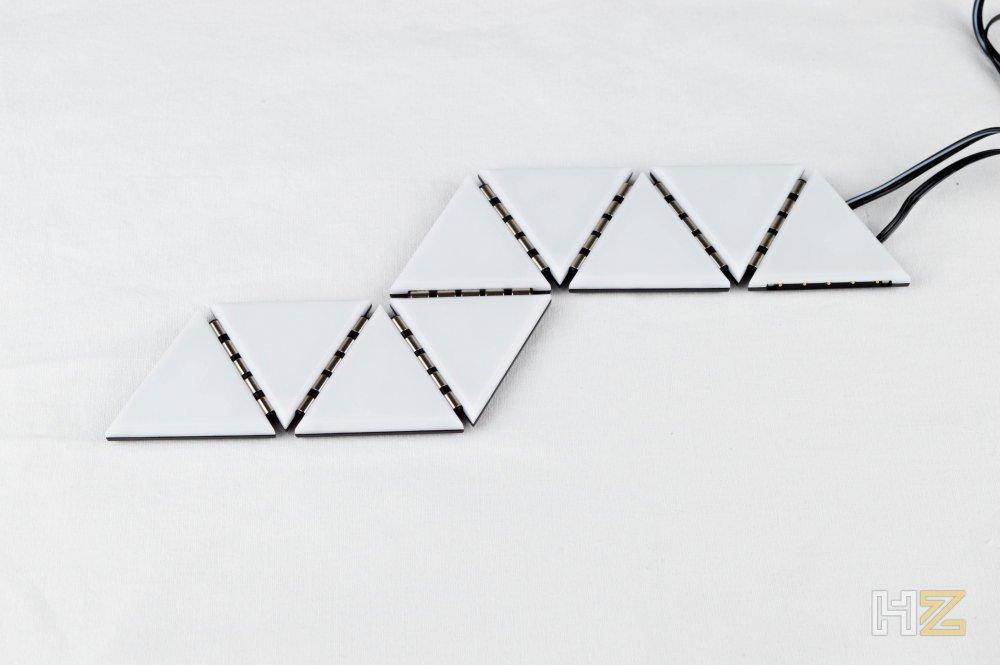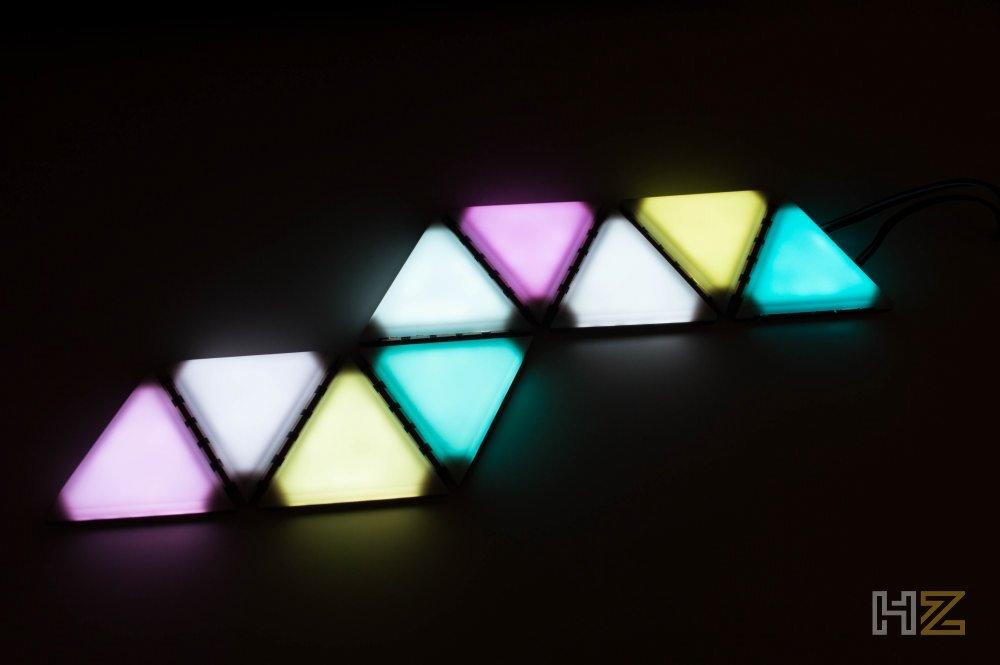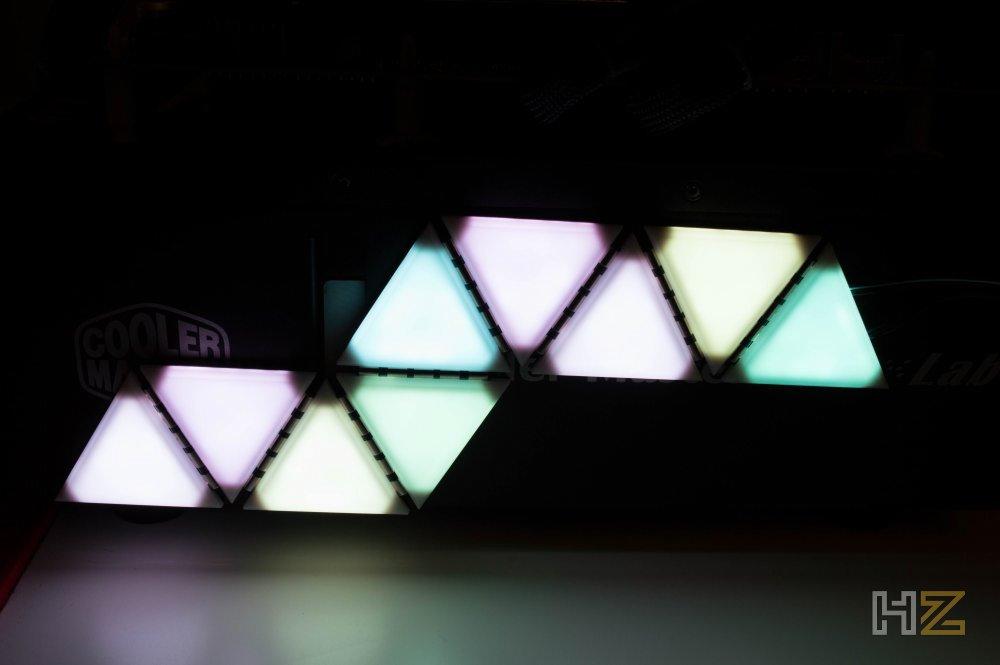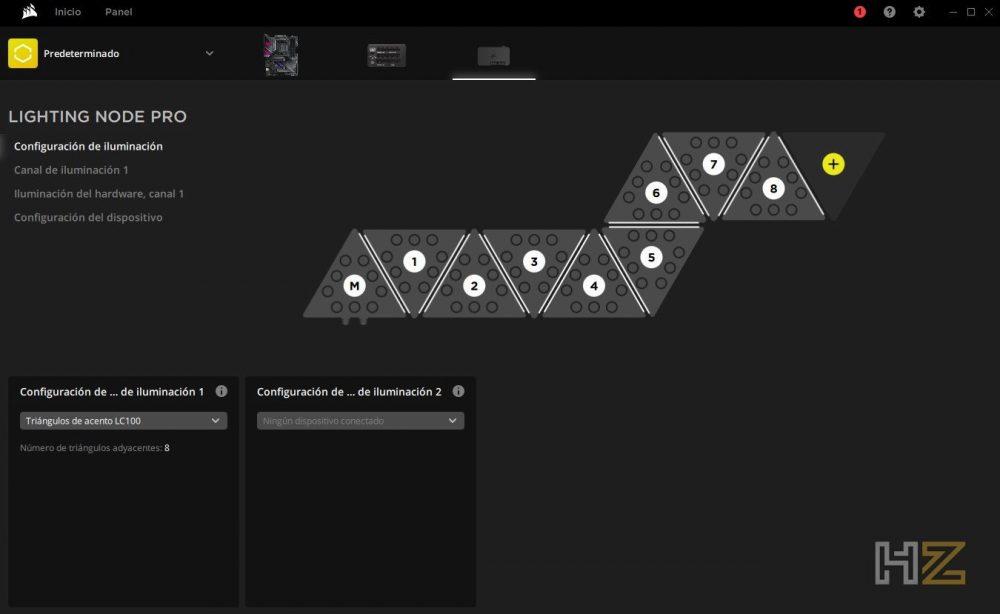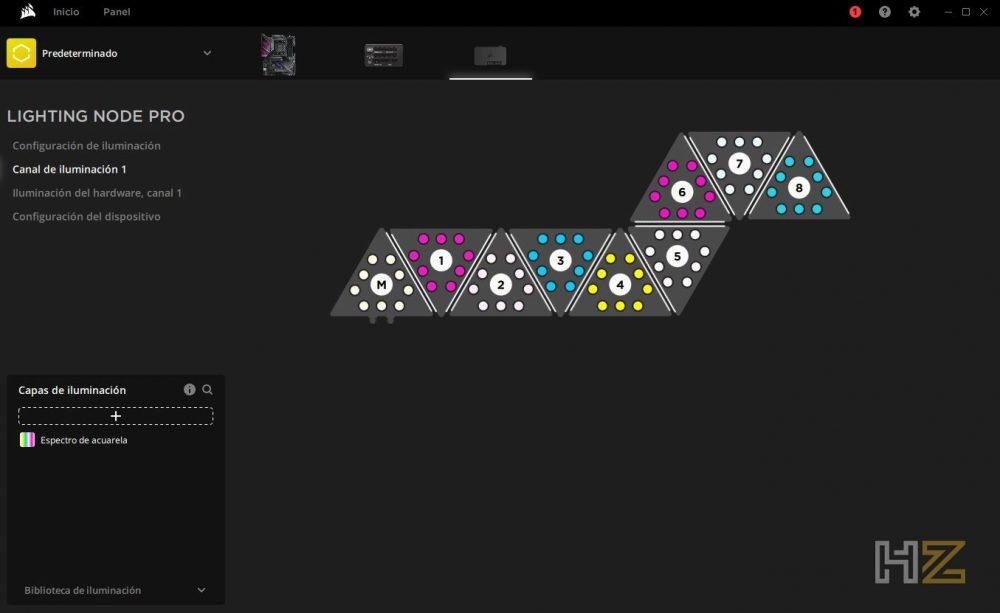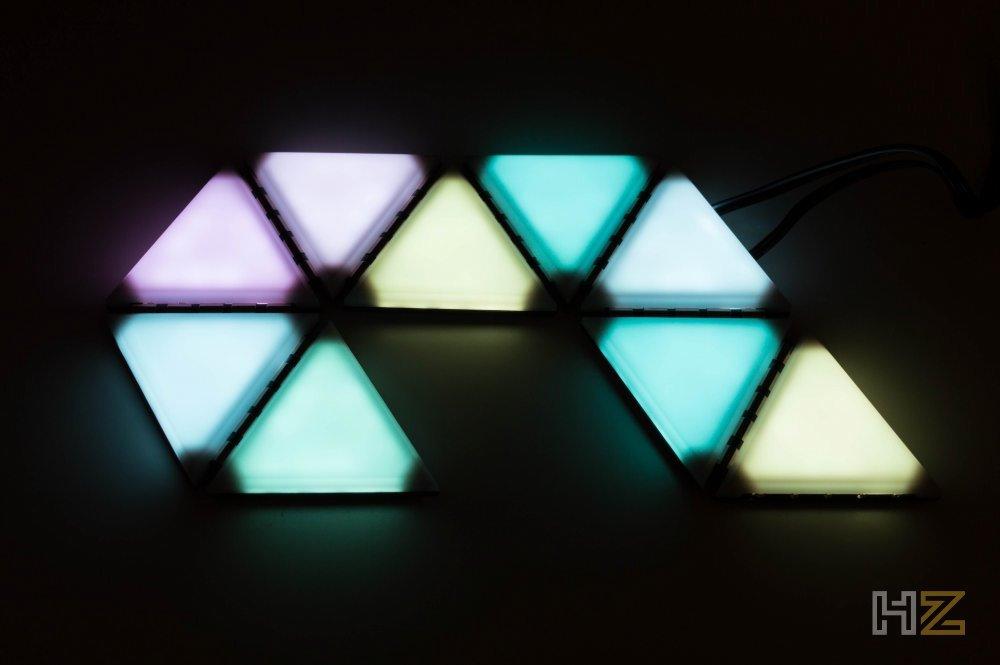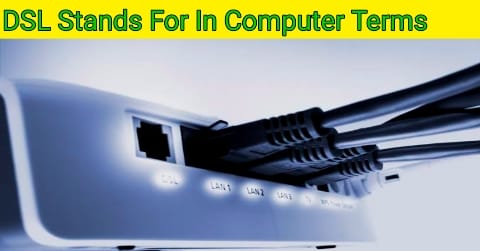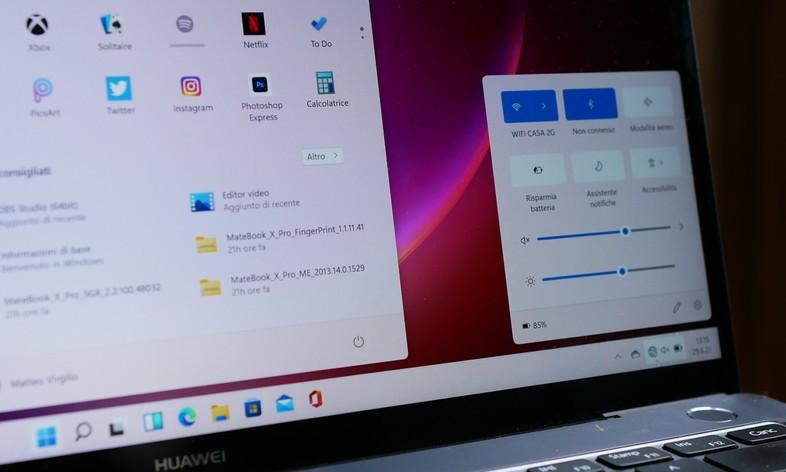- 81 RGB LEDs with light diffusion: the starter kit includes 9 triangular RGB panels, each internally illuminated by 9 RGB LEDs that are integrated into a housing designed to diffuse the light, melting it.
- Lighting Node PRO incluido: A controller is included in the starter kit so you don’t need to buy anything else separately, but it’s also compatible with the COMMANDER CORE XT and COMMANDER PRO.
- Magnetic anchor: forget about single-use adhesives that leave residue, each triangle has a magnetic anchor so you can place them wherever there is a metal piece.
- Create amazing 3D designs: Eight connectors and two corner connectors are included to make it easy to create the layout of your choice.
- Part of the iCUE ecosystem: LC100 lights are compatible with iCUE, allowing the user to quickly and easily set up and create light effects.
- Expandable up to 18 panels: 9 panels come in the starter kit, but 9 more can be added (with the expansion kit) allowing up to 18 panels with a single controller.
Unboxing and external analysis
As usual in CORSAIR accessories, this iCUE LC100 lighting comes packed in a rigid cardboard box adorned with the black and yellow colors that the brand has used since they created the “Corsair Gaming” brand, a brand that they later discarded. (and decided to change Corsair to CORSAIR, all caps).
In any case, as usual on the front we find an image of the product accompanied by the brand and model, leaving a summary of its main features in several languages on the back.
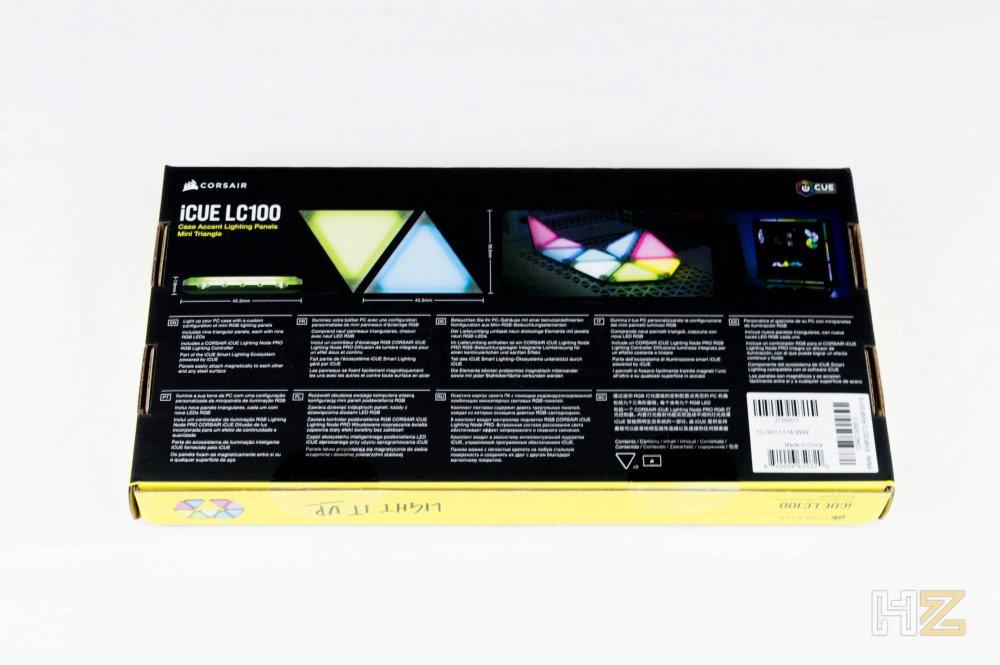
The box opens in the shape of a chest, and inside we find both the lighting triangles that make up this LC100 kit and the Lighting Node PRO that is included. In addition, in this case CORSAIR joins the fashion that other manufacturers have already started in the past and, to save paper, instead of including an instruction manual they have provided a QR code that we can scan with a smartphone and that will take us to the manual in his web page.
We remove the packaging and this is what we find inside:
- 9 RGB lighting triangles (one of them, the main one, anchored to the wiring).
- The triangles are joined by a total of 10 connecting cylindrical pieces.
- CORSAIR Lighting Node PRO.
- Internal USB connection cable.
- Extension cable for RGB connection.
- Pamphlet with warranty information.
Here you have the Lighting Node PRO, a device that we already know very well because we have used it several times before. It has two heads for RGB connection, a USB input to be able to control its operation through software, and it has a SATA power connector to service it. In addition, CORSAIR includes two double-sided adhesive strips to be able to stick it wherever it suits us best inside the PC case.
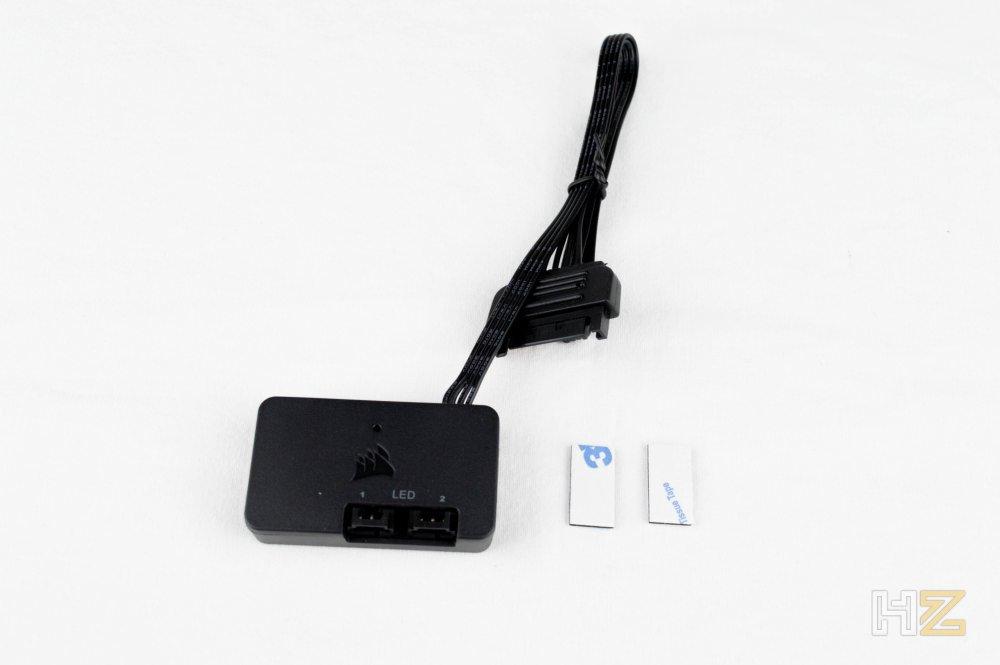
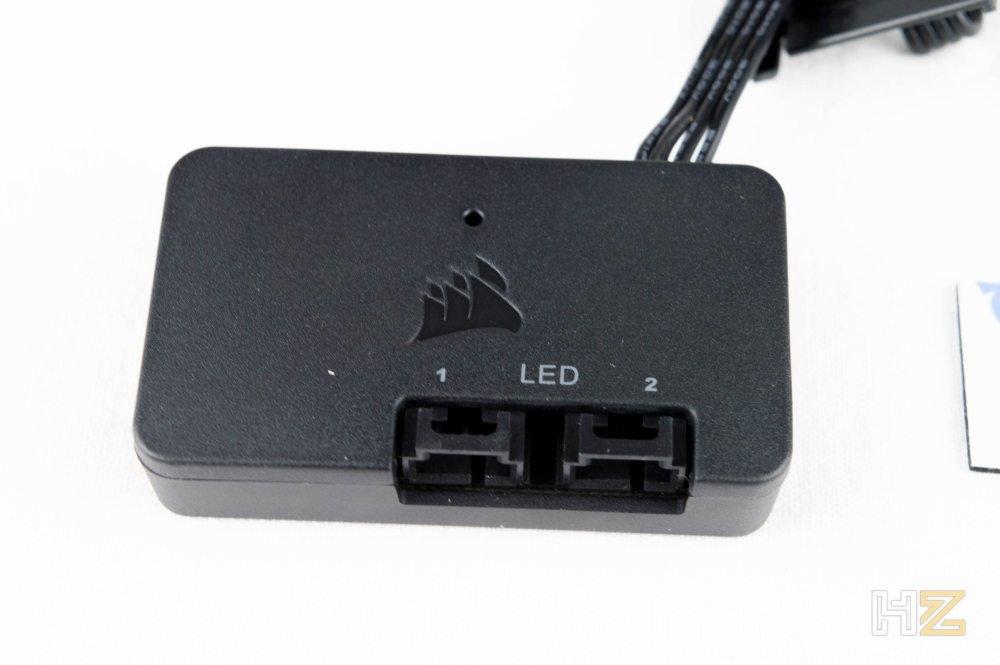
Here you have the system of lighting triangles, from which, as you can see, two cables come out: the RGB connection cable that must go to the Lighting Node PRO, and another for additional SATA power (thus, the entire system requires two SATA connectors from the power supply to work).

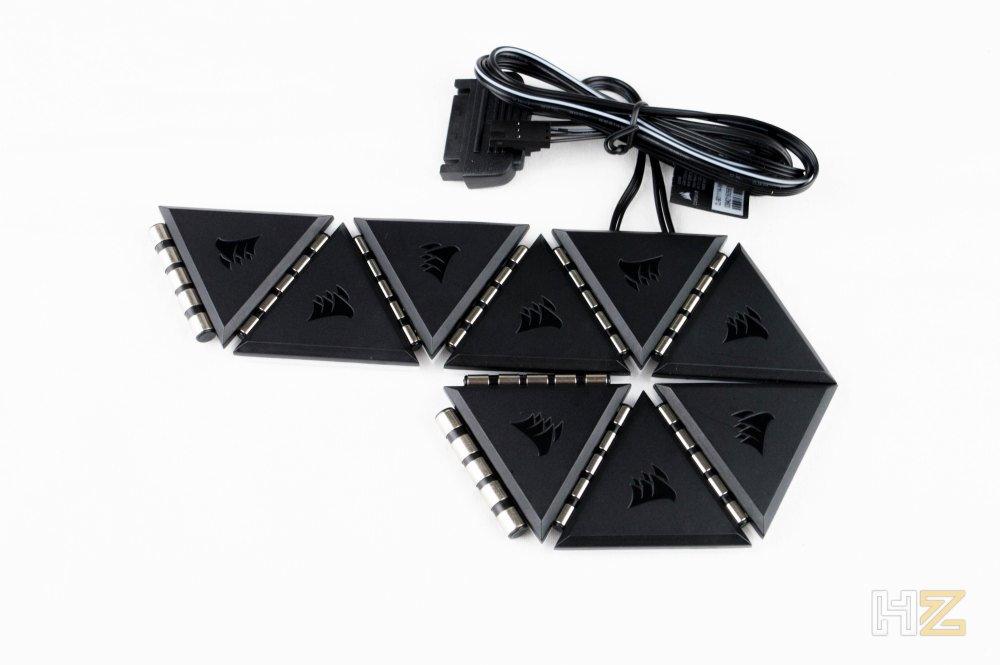
In the following image you can see that the magnetic anchor is in the triangles themselves, which can be joined together (although they won’t work if they don’t have the metal cylinder, be careful). In total, we also have 8 thin cylinders and 2 thicker ones: the thin ones are designed for a smooth connection, while the two thicker ones are designed in case we want to make a curve, for example, to place the assembly in a corner.
Here you can see a little more closely these metal connection cylinders that, as you can also see, have insulation to separate their five connection pins.
Each and every one of the triangles can be taken on and off (plus, one cool thing is that you can do it with the system on and as soon as you plug them in they’ll light up, so they’re completely Plug & Play). On two of its sides is where we will find the 5 connection pins, while the third side is blind.
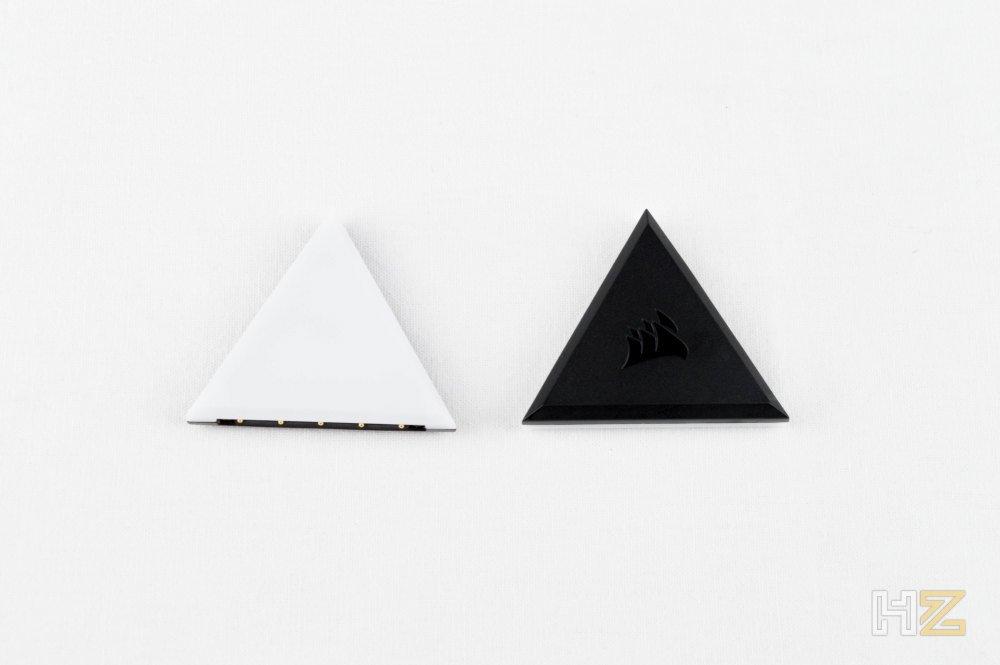
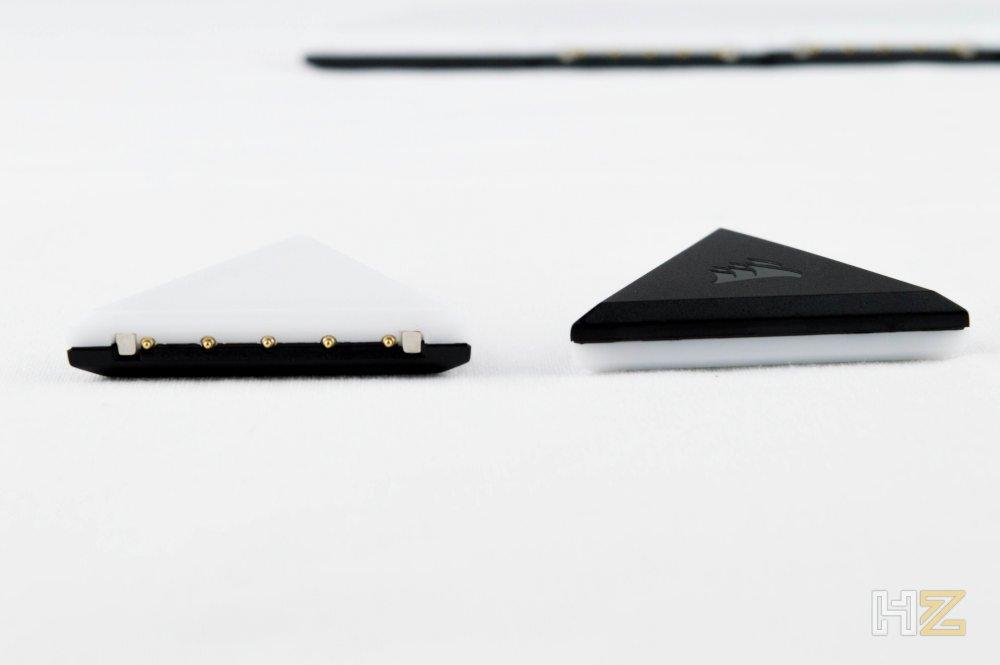
This allows us to create almost any shape we want given its triangular shape, but you have to keep in mind that they must be connected in a line. Similarly, remember that although the triangles are anchored to each other directly thanks to the magnets they have, they will not work without the union cylinders because the pins do not touch without them.
For example, the following shapes will not work as they do not have those connections (only the main triangle, from which the cables come out, would light up).
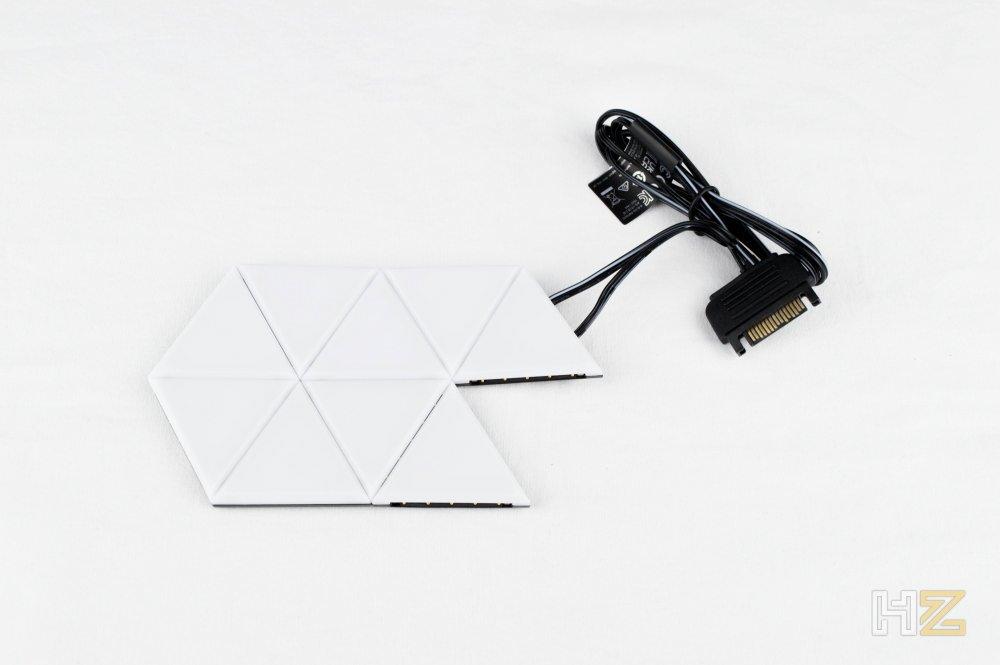

For the whole to light up in its entirety, we must place the union cylinders as you can see in the following image.
Having seen how the device is and the theory of its connection, we are going to proceed to see how it works and what we can do with it.
This is what the CORSAIR iCUE LC100 Accent Lighting look like
Connecting and installing the CORSAIR iCUE LC100 Accent Lighting isn’t overly complicated, but it does require a number of connections and cables that can make it quite tricky to make the system visible inside the box:
- We must connect the main triangle to the Lighting Node PRO, in one of its RGB ports.
- We also need to connect the main triangle to a SATA connector on the power supply.
- The Lighting Node PRO also requires connection to a SATA connector on the power supply.
- Also, we need to connect the Lighting Node PRO to a USB header on the motherboard.
Once everything is connected, you will see that the triangles light up. We recommend that you initially do it with the triangles “outside” the box to check that the shape and connections are working well and that you have not made a mistake, since you must remember that one of the sides of each triangle is blind and does not have connections.
In addition to having a magnetic connection to join them, each triangle also has a magnet on its back (the black one we saw before), so you can easily place them on any metal surface and they will stay stuck.
Essentially, you can shape it however you want, always respecting the connections. As the joints are cylindrical, you can also place them even in a corner if you want.
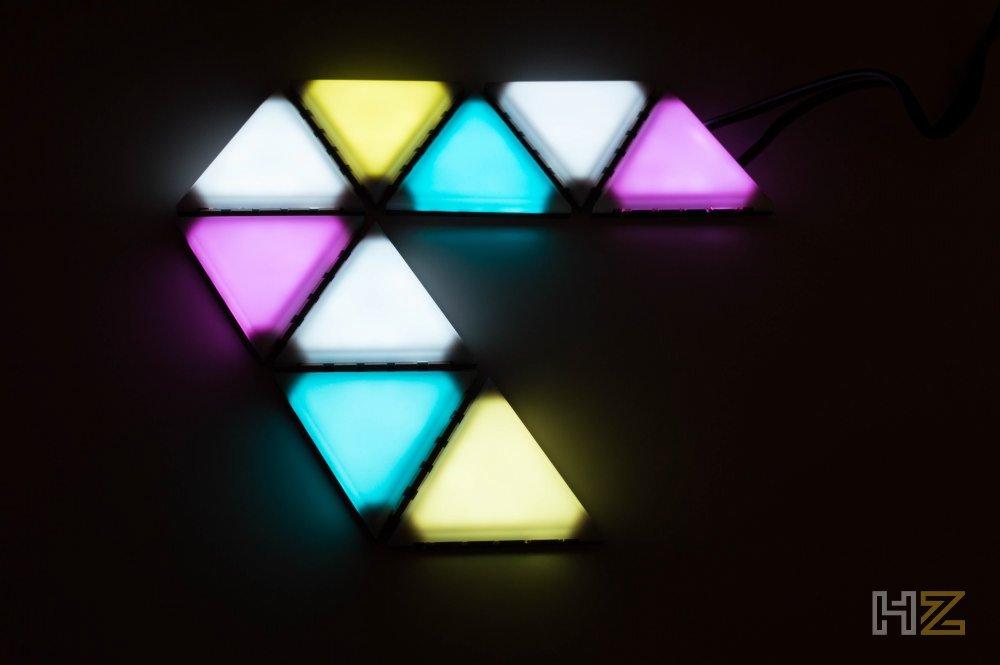
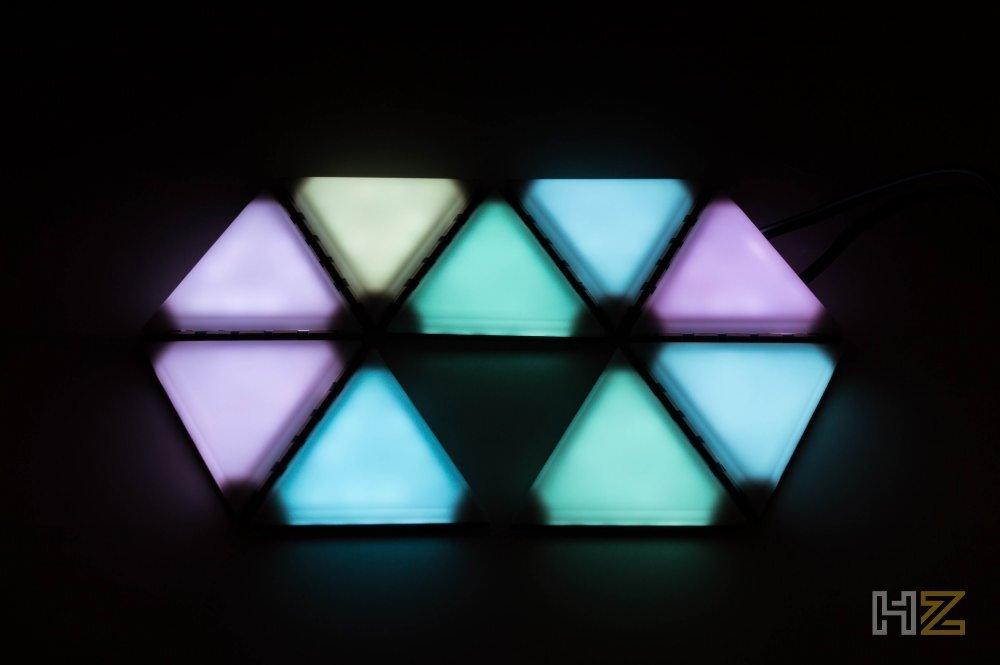
As for setup, it’s as easy as setting up any other CORSAIR lighting product. We already know iCUE, so we’re not going to get into it too much: keep in mind that you do need to have the latest version of the software.
iCUE detects the Lighting Node PRO, so the first thing you have to do to configure these LC100 is to access its first tab (Lighting Configuration) and, in the channel to which you have connected it (in this case, 1), select « LC100 Accent Triangles”. You will automatically see the triangles appear on the right side, and you will be able to move, add and remove them to adopt the physical shape you have set.
Once done, in the Lighting channel 1 tab you can configure the colors and effects of the device, which, as you can see, has a total of 10 individual LEDs per triangle.
The colors and effects that we can find are the same as in any other CORSAIR RGB device, and right from the start you have a large number of pre-configured effects that you can select, although it is true that you can also create your own effects with ease.
As for its operation, we have to say that the lighting is quite good and homogeneous, with the exception of the corners: you will have already noticed seeing the photos above that the corners of each triangle are in total darkness and that, in addition, It contrasts quite a bit with the rest of the lighting. This is really the only fault that we see in this lighting system and that we believe can be improved, since otherwise it works quite well.
Conclusion and verdict
It seems that CORSAIR is putting a lot of effort into creating new intelligent RGB lighting products and systems for PC, and this iCUE LC100 is proof of that. This is a product that is quite simple to use and very comfortable given its modularity, although it is true that it requires quite a bit of wiring complexity to connect everything.
We must also emphasize again that the lighting, although it looks good in some of the ways that we can give it (especially in circular shapes, since a kind of circle of darkness is created as you can see in the image below), it is something Improvable since the corners of each triangle are in total darkness.
On the other hand, we have to talk about the price: the starter kit that includes the Lighting Node PRO is priced at 119.90 Euros, while the expansion kit that only includes 9 more triangles costs 94.90 Euros, so we are Before a product that is quite expensive for us a priori, especially when it is something quite “niche” that will only attract the attention of fans of RGB lighting on the PC.
In any case, if you are looking for a “different” lighting kit for your PC that, in addition, thanks to its modularity, allows you to physically modify its design whenever you want, this CORSAIR iCUE LC100 is a product that we cannot stop recommending. For this reason, it takes our Silver award, as well as our recommendation for its design.



